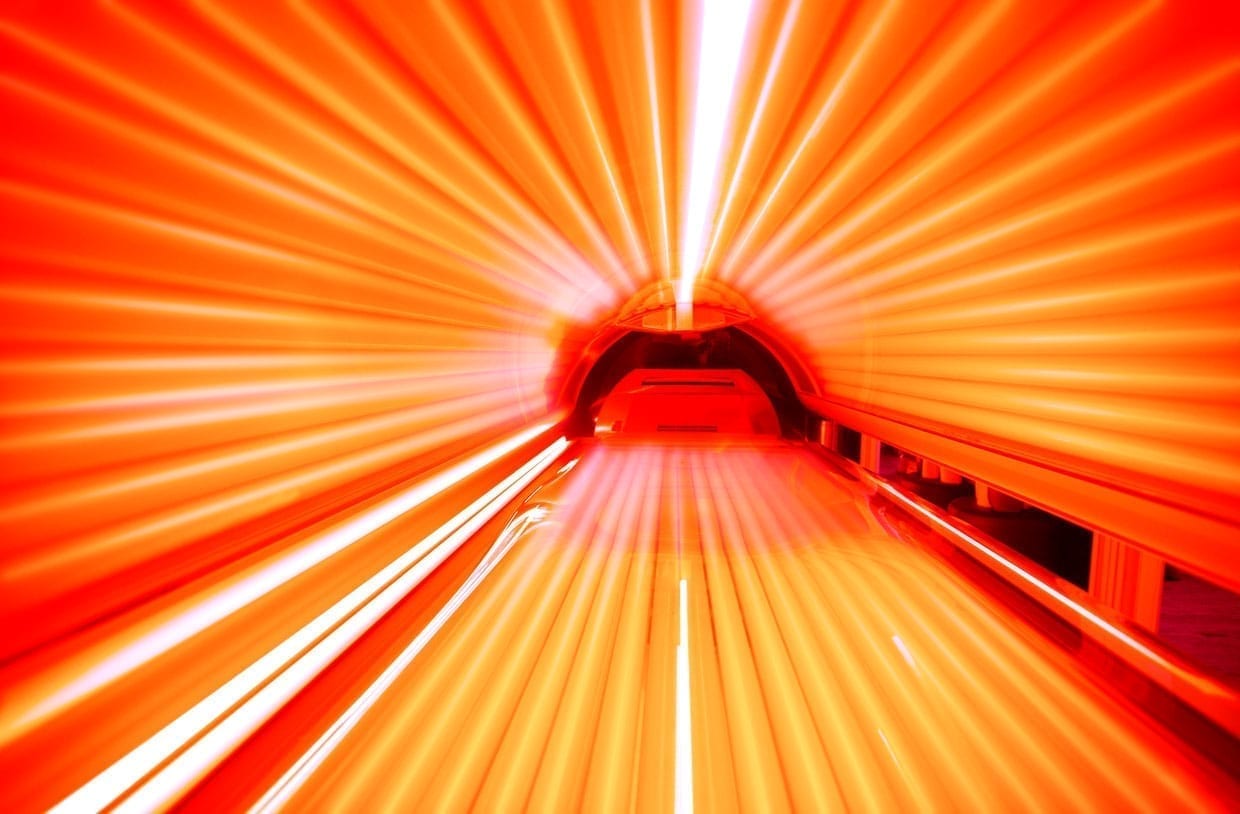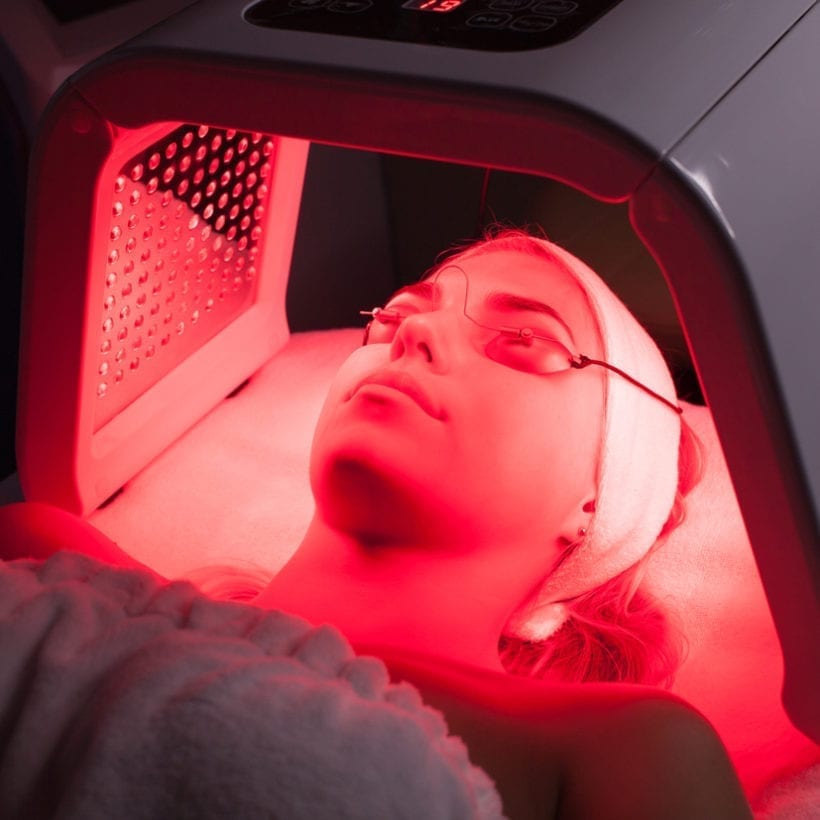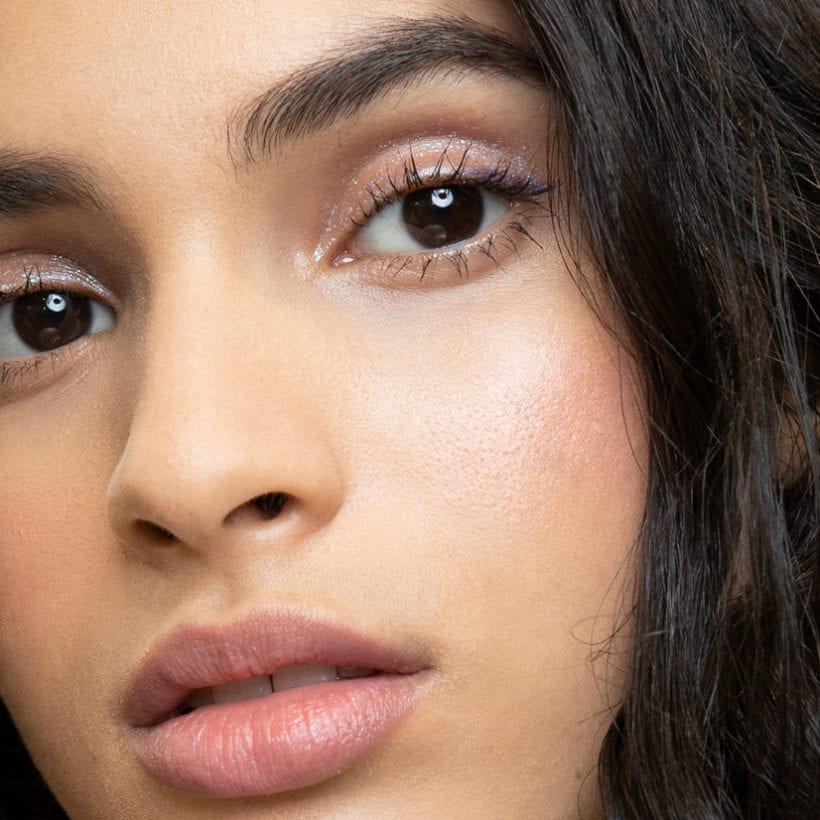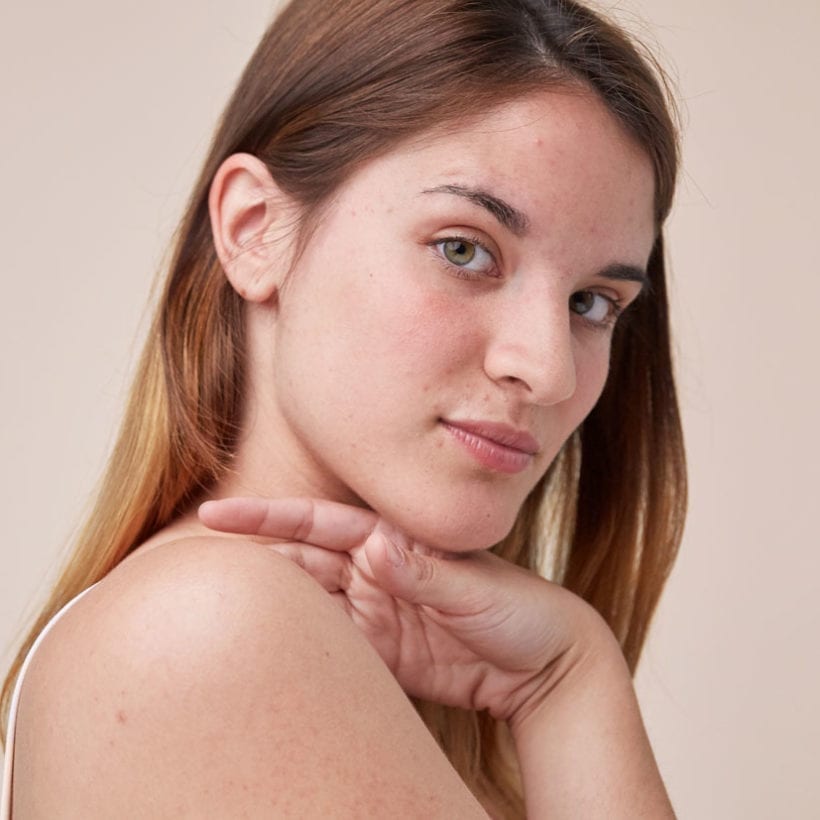Every time a beauty treatment A) claims to work “miracles,” and B) is extremely Instagrammable, a teeny tiny alarm sounds off in the exquisitely sensitive “BS center” of my brain. I have been a beauty writer for five years, and over that time, my personal skincare routine has actually gotten less fancy, as more and more trendy (unregulated) marketing ingredients and treatments, from vampire facials to peel-off charcoal masks to CBD, have inspired a sense of skincare cynicism. The first time I ever saw a full-body LED light bed (on Instagram, naturally) — the newest “miracle” technology that promised to cure everything from acne to photoaging to a weakened immune system, and also appeared to be practically invented for social media — I raised a skeptical eyebrow and swiped right past.
However, a recent bout of sudden and aggressive hormonal chin acne inspired me to revisit LED therapy — specifically, the full-body red light bed at celebrity esthetician Shani Darden’s buzzy new Beverly Hills studio. A little refresher on what LED therapy is: the acronym stands for light-emitting diode. Blue and red are the most common forms of LED light used for cosmetic purposes, and the two types interact with the skin differently. As New Jersey-based dermatologist Shari Sperling, D.O., explains, “Blue light helps treat acne by killing the bacteria known to cause acne: P. acnes. The red light goes deeper into the skin and is therefore used for skin rejuvenation, wound healing, fine lines and wrinkles.” Red light can also improve inflammation, so it can soothe and repair acne, sun damage, and scars.
https://www.instagram.com/p/BtoMh94Htlu/
LED therapy has been around for decades, since long before it started popping up on my Instagram feed. I had tried versions of the treatment before, both in the context of in-office facials and at home with handheld devices; but, because my skin had always been pretty well-behaved before, it was hard to tell if the treatment was doing anything other than putting on a light show. “There have been varied results with these LED treatments,” says Sperling. “Differences can be based on the technology and brand of LED used along with the amount of time that was done for treatment.”
Here is the service Shani Darden offers: For $200, you get a 40-minute session where you rest naked upon an LED red light bed made by the brand LightStim. This was the first FDA-approved bed of its kind, though others in the industry are creating competitors (cult-followed NYC facialist Joanna Vargas has her own patented LED bed). The vessels sort of look like tanning beds, but rest assured they are completely unrelated to those medically denounced melanoma machines. (They do not use UV light — in fact, they actively heal UV damage — so they are safe for every season and every complexion, even those prone to sunburn.) LightStim’s founders created their device when they discovered that consistent full-body LED treatments worked to heal their 20-something son’s high blood pressure after two months of use. Evidently, blue light helps release nitric oxide, a bodily chemical that regulates blood pressure. And that is only where the benefits start.
When regularly exposed to full-body LED light, the promised results are impressive. “LED light therapy is an amazing treatment to boost collagen in the skin, minimize fine lines and wrinkles, and boost circulation,” says Darden. “It can also speed up healing and reduce pain, along with boosting your immune system. Not only does it make you look amazing, but it also helps you to feel amazing as well!” Sounds suspiciously miraculous, but there are several clinical trials backing up these claims.
Red light
is used
for skin rejuvenation, wound healing, fine lines and wrinkles.
Bottom line: the technology works. You just have to make sure your device is legit, which the LightStim bed is (the brand also makes smaller at-home devices for $169-$249, which earn Darden’s seal of approval, as does Déesse’s $1,900 Next Generation Pro LED Mask). However, many of the cheaper over-the-counter devices that have launched in recent years (Amazon has a robust selection) may not be. The light needs to be at the proper wavelength (anything outside a range of 600 nanometers to 1300 nanometers won’t penetrate the skin), and Sperling says undergoing treatments at a frequency of one-to-four times a month for two-to-three months straight is recommended. So, the time and dollar commitment required to reap LED’s miracles is high. Not as high as, say, a surgical facelift, or a year’s worth of Botox, but high nonetheless.
To cure my skin woes once and for all, I was willing to give it a shot. Before my LED bed experience, I had received multiple treatments for my new breakouts. I had been extracted, peeled, high-frequency’d, sulfur masked, and though I had definitely seen an improvement, there were still some remaining blemishes and acne scars that I was hoping this sci-fi-esque mechanism could help with. With any luck, it would make a dent in my stress levels too.
After examining my skin, cleansing it, and performing a few extractions, Darden told me I was a perfect candidate for LED therapy. Really, everyone is an ideal LED candidate (“It works for any skin type and any skin tone,” says Sperling), but I had, even more, to gain considering all the immune-compromising stresses going on in my life: a big move, a major career switch, lots of travel, new birth control, etc. Darden led me into the LED suite of her chic, spacious studio, then told me to strip down and lie 20 minutes on my back, then 20 minutes on my front (the bed shuts off after the first 20 minutes so you know to flip, like a high-tech marshmallow roaster). “You’re going to love how you feel afterwards,” she told me.
Once on, the bed glows an intense red light — seriously, it looks like the surface of Mars — though it is not at all dangerous to your sight. There is an LED-emitting mask that extends from the bed and is positioned directly above your face. You keep your eyes closed (an eye cover is optional, as is a towel to cover your body so you don’t feel so exposed, though no one else is in the room). And you lie with your hands flat against the bed, as there are tons of receptors in your palms that you want to soak up the LED goodness. The bed heats up to a comfy warmth, like an 80-degree day at the beach, enveloping you into a cozy trance. For the whole 40 minutes, I remained in a hazy twilight stage between alert waking consciousness and sleep.
https://www.instagram.com/p/BwQMYyIlbtQ/
When the treatment was over, I indeed loved how I felt — more relaxed than I had been in weeks, like I had just woken up from a century in cryogenic sleep. I also couldn’t help but notice the most immediate physical result: the bed’s collagen stimulating effects made my lips swell about 20 percent. For the next 24 hours, it looked like I had gotten (really well done) lip injections. And for the remainder of the day, I felt extremely calm, physically and emotionally, no doubt a result of the warm light and anti-inflammation, immune-boosting effects.
Sperling emphasizes that for LED therapy to be its most effective, more than one treatment is essential. However, all I know is that for four months, I battled persistent acne that seemed to return the second I got it under control, but after my LED session, my skin turned a corner. That was two weeks ago, and I haven’t had a new flare-up since. The active blemishes and scars around my chin and nose have continued to heal and improve.
As a skincare skeptic, am I willing to entirely credit this beauty miracle to one session of full-body LED therapy? Not quite yet. But my interest was piqued enough that I would do it again. And not just for the ‘gram.
We only recommend products we have independently researched, tested, and loved. If you purchase a product found through our links, Sunday Edit may earn an affiliate commission.







